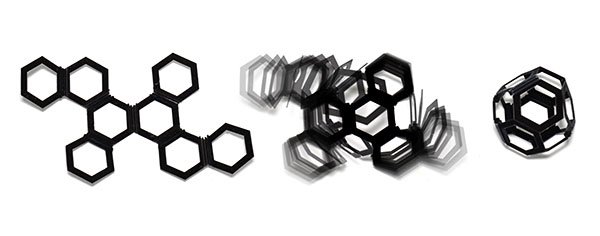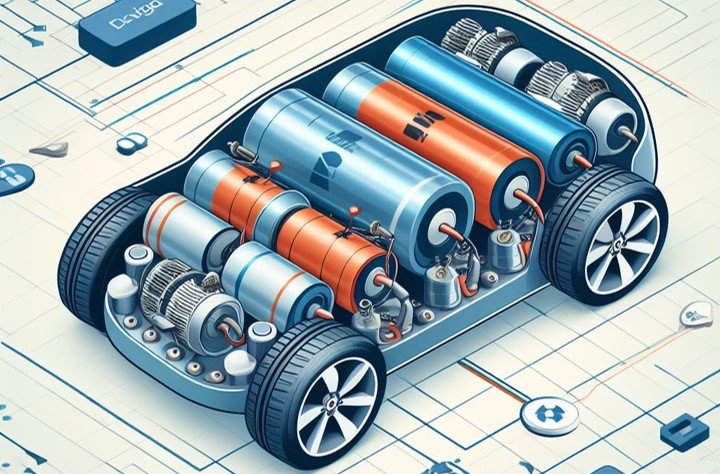The concept of 4D printing has the potential to reshape the manufacturing landscape. With the ability to create dynamic, self-transforming structures, 4D printing takes the capabilities of 3D printing to new heights. By incorporating a new dimension into the printing process, 4D printing enables objects to respond to external stimulation, such as temperature, humidity, or pressure. This revolutionary technology opens up a whole new realm of possibilities for industries like aerospace, healthcare, and automotive.
What is 4D printing?
4D printing is an emerging technology that takes the principles of 3D printing and adds dimension to manufacturing. While 3D printing enables the creation of three-dimensional objects by layering materials, 4D printing goes a step further by introducing materials that can change their shape or properties over time. This is achieved through the use of smart materials, such as shape-memory polymers or hydrogels, which can respond to external stimulation and transform into predetermined shapes.
The concept of 4D printing was first introduced by Skylar Tibbits, a research scientist at MIT, in 2013. Tibbits described 4D printing as a “multi-material shape transformation” and highlighted its potential to revolutionize manufacturing by enabling the creation of objects that can self-assemble, self-repair, or adapt to their environment.
4D Printing vs 3D Printing
While 4D printing builds upon the principles of 3D printing, there are key differences between the two technologies. 3D printing focuses on creating static objects by layering materials, whereas 4D printing introduces the element of time, allowing objects to change their shape or properties. This additional dimension opens up a whole new range of possibilities for manufacturing, as objects can now be designed to respond and adapt to external stimuli. Below table provides a detailed comparison of both technologies:
| Technical Parameters | 3D Printing | 4D Printing |
|---|---|---|
| Definition | 3D printing, or additive manufacturing, creates a three-dimensional object layer by layer from a digital model. | 4D printing involves 3D printing objects that can change shape or properties over time in response to external stimuli, such as temperature, humidity, or light. |
| Material Used | Various materials, including plastics, metals, ceramics, and composites, depending on the specific 3D printing technology. | Often uses smart materials with specific properties that can change, such as shape memory polymers or materials responsive to environmental changes. |
| Complexity | Limited ability to create complex shapes and structures, especially for traditional 3D printing methods. | Allows for the creation of complex structures and dynamic shapes that can transform over time. |
| Applications | Widely used in prototyping, manufacturing, healthcare (e.g., custom implants), aerospace, and more. | Emerging applications in self-assembling structures, medical devices, adaptive architecture, and soft robotics. |
| Time Dependency | Objects are static once printed. | Objects can change shape or properties over time due to external stimuli, adding a temporal dimension to the design. |
| Processing Steps | Layer-by-layer additive process. | Similar to 3D printing but may involve additional steps, such as programming the object’s response to external stimuli during the printing process. |
| Control Mechanism | Primarily controlled by the design and printing process. | Can be designed to respond to specific stimuli, allowing for controlled and programmable transformations. |
| Challenges | Limited flexibility in changing shape post-production. | Challenges in optimizing materials, design, and control mechanisms for reliable and predictable transformations. |
| Cost | Generally established as a cost-effective manufacturing method. | May involve additional costs due to the use of specialized materials and the complexity of controlling dynamic transformations. |
| Examples | Prototyping, tooling, production parts. | Self-assembling structures, adaptive and responsive materials in various applications. |
How 4D printing is changing the design process
The ability to create self-transforming objects opens up new avenues for design exploration. Designers can now focus on creating objects that can adapt to different conditions or perform specific functions. For example, in the field of architecture, 4D printing enables the creation of structures that can adjust their shape based on environmental conditions, such as temperature or wind load. This not only improves the efficiency of buildings but also opens up possibilities for creating dynamic and interactive spaces.
Investing in 4D printing: Companies and research institutions leading the way
As the potential of 4D printing becomes increasingly recognized, companies and research institutions around the world are investing in its development. Some of the key players in the field include:
1. MIT Self-Assembly Lab: The Self-Assembly Lab at MIT has been at the forefront of 4D printing research. Led by Skylar Tibbits, the lab explores the possibilities of self-transforming materials and their applications in various industries.
2. Stratasys: Stratasys, a leading manufacturer of 3D printers, has also embraced the potential of 4D printing. The company has partnered with academic institutions and research organizations to advance the development of 4D printing technology and explore its applications in industries such as healthcare and aerospace.
3. Autodesk: Autodesk, a software company specializing in design and engineering solutions, has been actively involved in the development of 4D printing technologies. The company’s research focuses on creating software tools that enable designers to simulate and optimize the behavior of 4D-printed objects.
Current applications of 4D printing
While 4D printing is still in its early stages, there are already several notable applications of the technology. Some of these include:
1. Biomedical implants: 4D printing holds great promise in the field of biomedical implants. By using smart materials that can respond to the body’s environment, implants can be designed to adapt and promote healing. For example, 4D printed stents can change shape to accommodate the needs of a patient’s blood vessels, reducing the risk of complications.
2. Self-assembling furniture: One of the most exciting applications of 4D printing is in the furniture industry. 4D printed furniture can be manufactured in a flat or compact form and then self-assemble into their final shape upon exposure to specific stimuli, such as heat or moisture. This not only reduces shipping costs but also allows for the creation of customizable and space-saving furniture designs.
3. Responsive textiles: 4D printing is also finding its way into the world of fashion and textiles. By integrating smart materials into fabrics, designers can create garments that can change their shape, color, or pattern based on external factors. This opens up possibilities for creating adaptive clothing that can adjust to different weather conditions or user preferences.
Potential future applications of 4D printing
As the technology continues to evolve, the potential applications of 4D printing are vast. Some of the possible future applications include:
1. Smart infrastructure: 4D printing can be used to create intelligent infrastructure systems that can respond to changing conditions. For example, bridges could be designed to adjust their shape or stiffness in response to changes in temperature or traffic load, improving their durability and lifespan.
2. Micro-scale robotics: 4D printing can enable the creation of miniature robots that can self-assemble or adapt to their environment. These micro-scale robots could be used in various fields, including healthcare, where they could be deployed for targeted drug delivery or minimally invasive surgeries.
3. Environmental sustainability: 4D printing has the potential to contribute to environmental sustainability by reducing waste and energy consumption. With the ability to create objects with intricate internal structures, 4D printing can optimize material usage and minimize the need for post-processing or assembly, leading to more efficient and sustainable manufacturing processes.
Conclusion: Embracing the possibilities of 4D printing in manufacturing
The emergence of 4D printing is set to revolutionize the manufacturing landscape. By adding dimension to the printing process, 4D printing enables objects to transform and adapt to their environment, opening up a wide range of possibilities for industries such as aerospace, healthcare, and automotive.
While 4D printing is still in its early stages, its potential impact on design, supply chains, and various industries is already becoming evident. As companies and research institutions continue to invest in its development, we can expect to see even more exciting applications of 4D printing shortly.
So, brace yourself for the future of manufacturing – a future where objects can shape-shift and adapt to their environment, thanks to the power of 4D printing. The possibilities are endless, and the innovation potential is boundless. The era of 4D printing has arrived, and it’s time to unleash its full potential and embrace the endless possibilities it offers to reshape the world of manufacturing.















+ There are no comments
Add yours